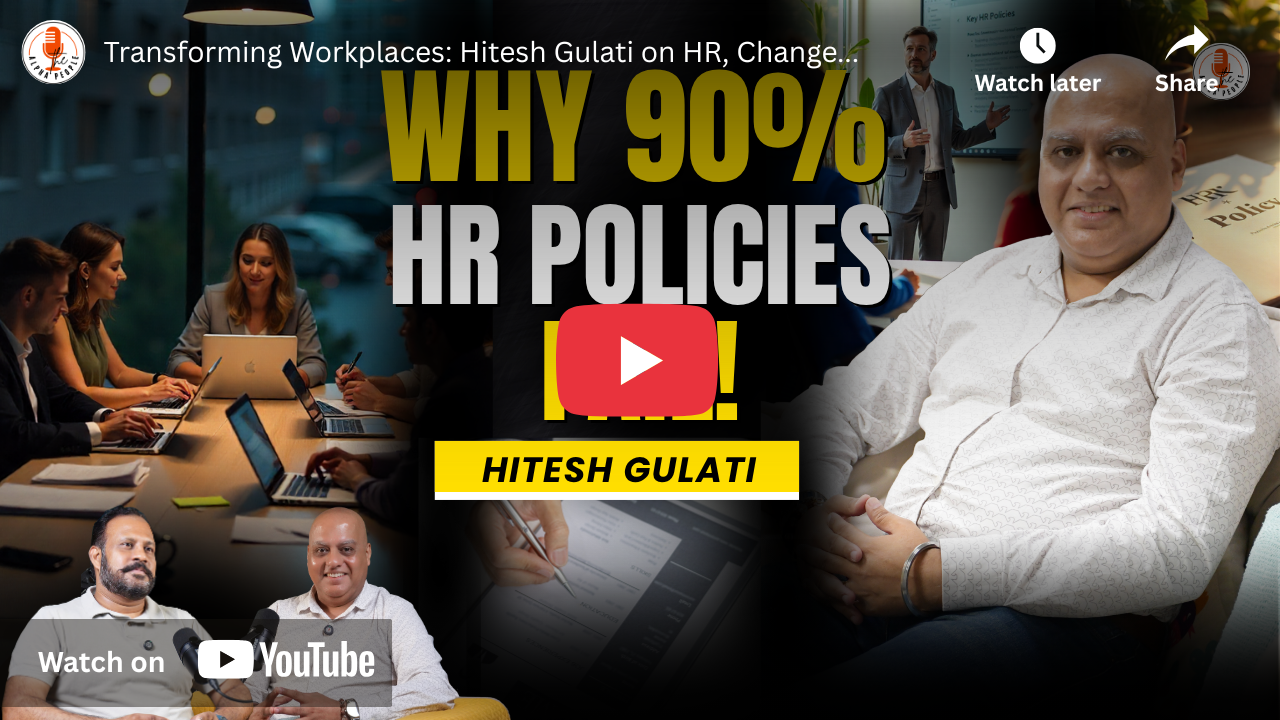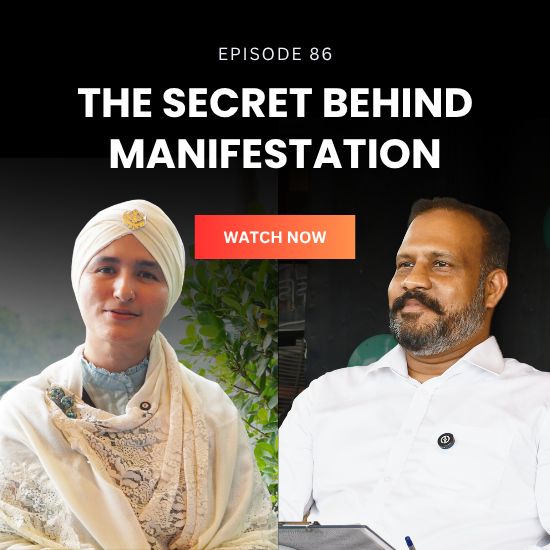The episode begins with host Naveen Kumar Verma introducing Hitesh Kumar Gulati, a Human Capital Transformation & Change Management Consultant with over 24 years of experience. Hitesh shares his professional journey, starting as a graphic designer in 2001 before moving into IT operations and eventually venturing into HR consulting. His turning point came in 2004 when he founded his recruitment consultancy, and later in 2014, when he expanded into HR advisory, training, report writing, and program management. He emphasizes the importance of experimentation, numbers, and dashboards in tracking professional growth and ensuring organizational development.
A significant portion of the conversation revolves around Human Capital Transformation—why organizations must focus not just on employees but on cultivating cultural alignment, behavioral competencies, and long-term adaptability. Hitesh explains that transformation begins with denial and resistance before moving to learning and eventual commitment. He highlights how HR interventions are often met with skepticism, as consultants are sometimes perceived as “villains” trying to disrupt established systems. However, through patience, communication, and best practices, sustainable change can be achieved.
The discussion then shifts to hiring and HR policies. Hitesh underlines the importance of cultural fitment alongside domain-specific and behavioral skills. He introduces the idea of a Skill Set Matrix for different organizational levels—individual contributors, managers, leaders, and promoters—ensuring alignment between recruitment, training, and performance appraisals. He also addresses challenges like salary discrepancies among employees, stressing the need for transparent communication and efficiency-based evaluation rather than rigid policy adherence.
On training and generational differences, Hitesh shares his approach of using acronyms and models to make sessions memorable and impactful. His “3Cs Framework” (Connect, Collaborate, Celebrate) is a cornerstone of his training philosophy. He explains how Gen X values recognition, Gen Y values autonomy, and Gen Z thrives in creative environments—thus requiring a blended training approach with case studies, role plays, simulations, and game-based learning. He also stresses the role of mindfulness, resilience, and stress management in building stronger teams and introduces tools like TABLA (Thinking, Behavior, Lifestyle, Activating Triggers, Assertiveness) and PCR (Progressive, Collaborative, Resilient Mindset).
The conversation further explores work-life balance, where Hitesh argues that balance is largely an individual’s responsibility rather than solely the company’s. He distinguishes between intrinsic motivation (driven by passion and fulfillment) and extrinsic motivation (driven by rewards and recognition), emphasizing that true success comes when individuals align their passions with their work. He also shares his personal battle with overthinking, which he overcame through chakra healing, mindfulness, and continuous self-experimentation.
Towards the end, Hitesh reflects on the role of social media in professional branding, advocating for quality content that adds value rather than noise. He encourages individuals and organizations to leverage multiple platforms strategically for visibility and influence. Closing with his core philosophy, Hitesh urges viewers to maintain a positive Activating Trigger (ABC), which strengthens belief systems and ensures positive outcomes. His final message resonates strongly: never let external influence overpower your inner conviction—leaders are made by resilience, mindset, and the ability to transform challenges into opportunities.
🔔 Don’t forget to subscribe & share if this conversation resonated with you!
🔔 Don’t forget to subscribe & share if this conversation resonated with you!
Frequently Asked Questions
Certainly! Here are some potential questions and answers based on the podcast conversation:
Hitesh explains that along with domain-specific skills and behavioral skills, the most critical factor is cultural fitment. If an employee’s value system doesn’t align with the company’s culture, they may fail despite having strong technical abilities. He recommends defining a Skill Set Matrix for every level—individual contributors, managers, leaders, and promoters—so hiring, training, and performance evaluations are consistent.
Change, Hitesh says, follows a cycle—Denial → Resistance → Experimentation → Commitment. Consultants are often seen as “villains” because they disrupt existing comfort zones. The key is patience, clear communication, and involving employees in co-designing processes. Transformation succeeds when leadership sets the tone and change cascades down.
According to Hitesh, skipping a proper Gap Analysis is the biggest mistake. Policies should be based on an organization’s current state vs. desired future state, aligned with CEO vision. He stresses conducting anonymous surveys, one-on-one meetings, workforce analytics, and co-designing solutions with department heads to ensure acceptance and successful implementation.
Hitesh suggests linking compensation not just to experience but also to results, efficiency, and agility. Policies should allow management flexibility “on the basis of business exigency.” Transparency during induction, orientation, and annual events helps employees understand that efficiency and outcomes, not just tenure, drive pay scales.
Hitesh highlights that different generations have different motivators: Gen X values recognition, Gen Y values autonomy, and Gen Z thrives in creative environments. He uses his 3Cs model (Connect, Collaborate, Celebrate) and blends case studies, role plays, simulations, and game-based learning to engage all groups. Training should be designed dynamically, with spaced learning and interactive methods.
Hitesh strongly believes work-life balance is primarily an individual’s responsibility. While companies can provide supportive environments, it’s up to employees to manage time, prioritize tasks, and stay organized. Colleagues doing the same work in 4 hours vs. 10 hours show that productivity is about personal efficiency, not just company culture.
Hitesh explains that many employees view training as “time off work” rather than growth. The mindset changes only when leadership embeds training into company culture. He emphasizes measuring both the trainer’s effectiveness and whether employees are actually applying new learnings in their day-to-day roles.
While domain skills are easy to acquire, the real challenge lies in behavioral skills and life skills. Employees resistant to learning or unwilling to adapt become obstacles. Without addressing mindset, even the best technical training won’t stick.
Hitesh suggests setting a realistic performance structure: daily 70–80% target completion, with 100% achieved by week’s end. This balance avoids burnout while ensuring accountability. Clear expectations during induction and orientation help prevent conflicts later.
According to Hitesh, constant communication is key. Whether about pay structures, performance metrics, or culture, repeated communication from leadership prevents disconnects. Employees must feel valued and informed, otherwise dissatisfaction and resistance grow.
Hitesh stresses that trainers must shift focus: “It’s not about what I deliver, it’s about what trainees gain.” For Gen Z, interactive methods like game-based learning, role plays, and simulations work best. Trainers should design experiences that are dynamic, short, and engaging, keeping attention spans in mind.






